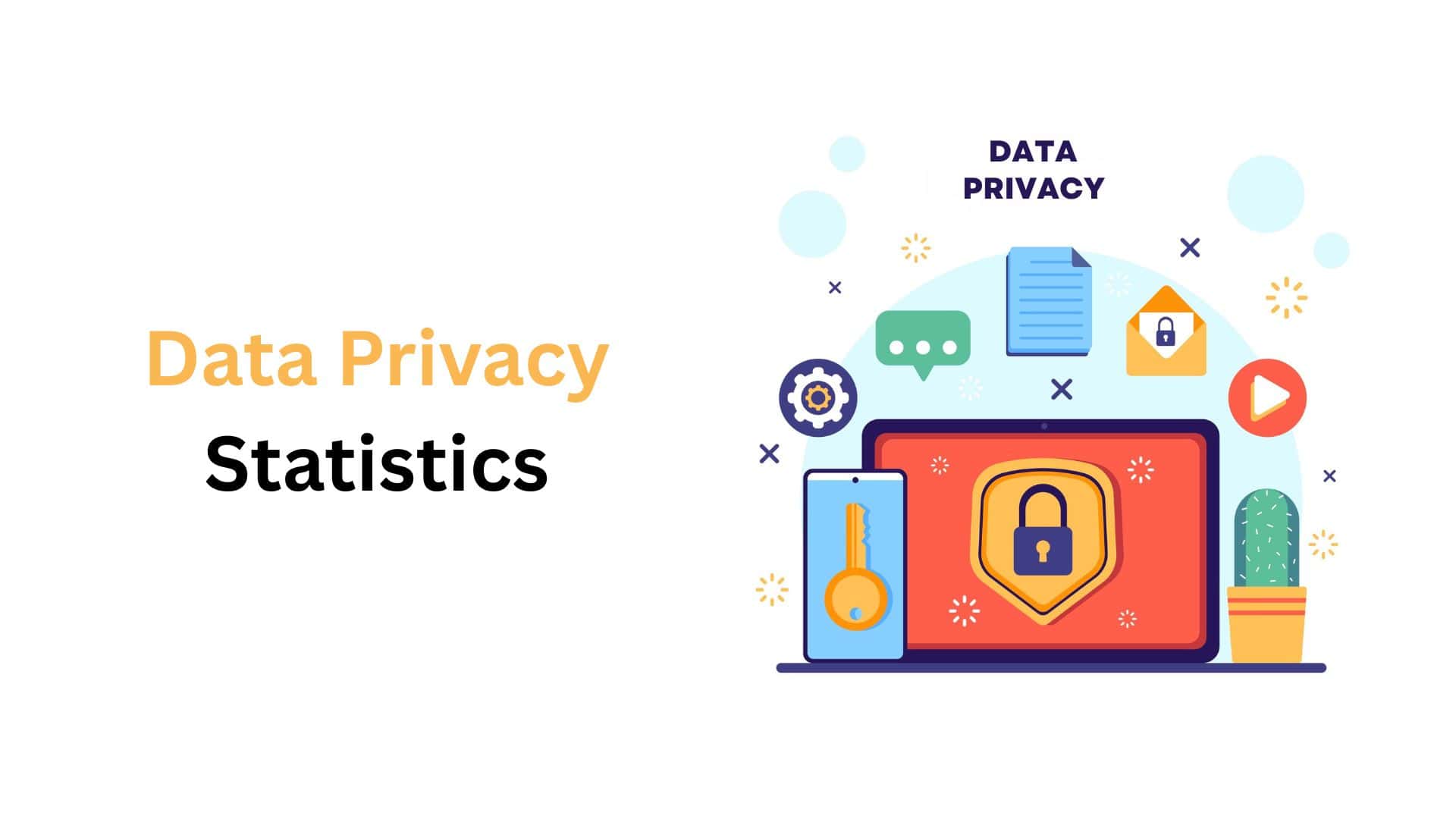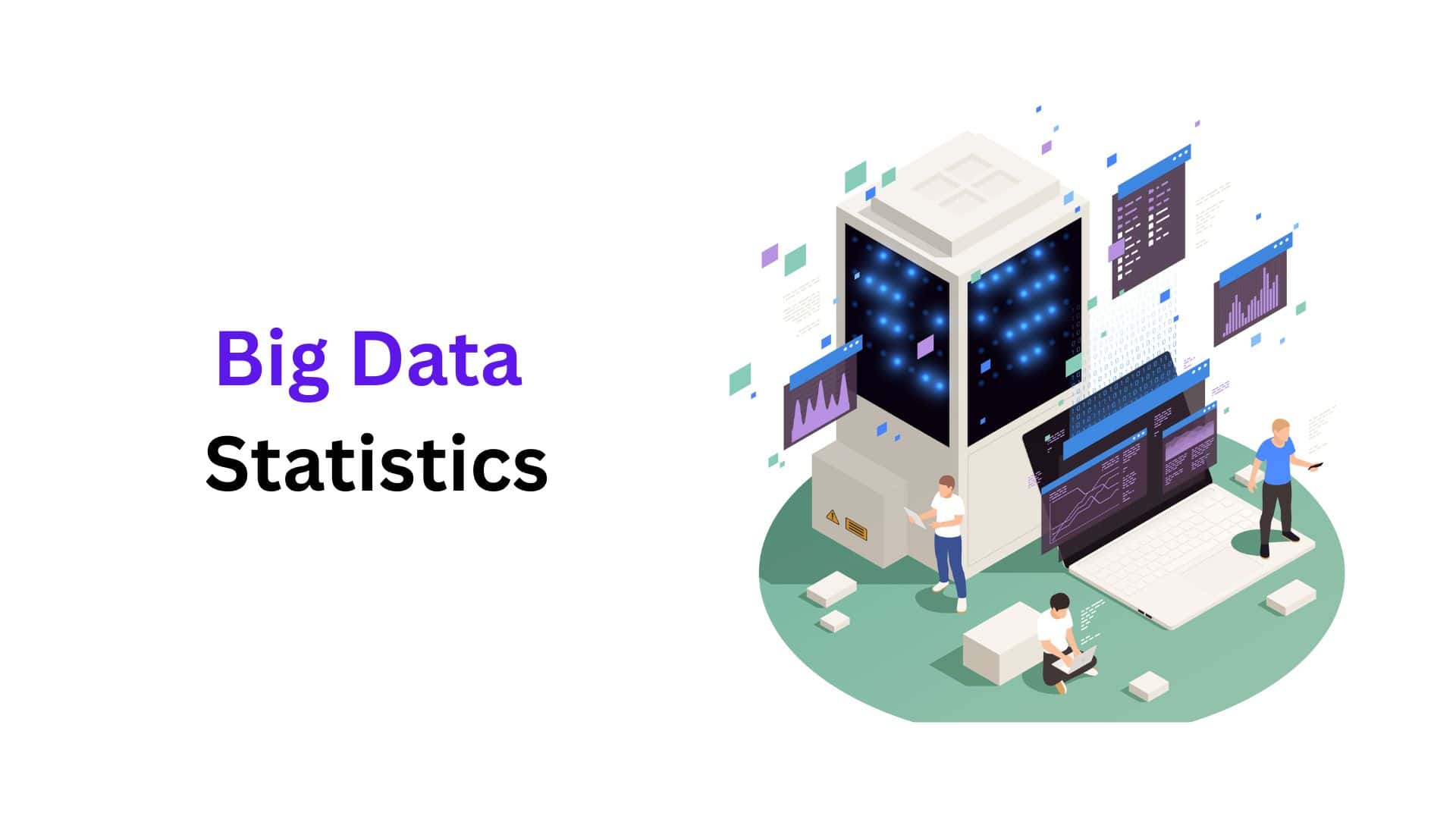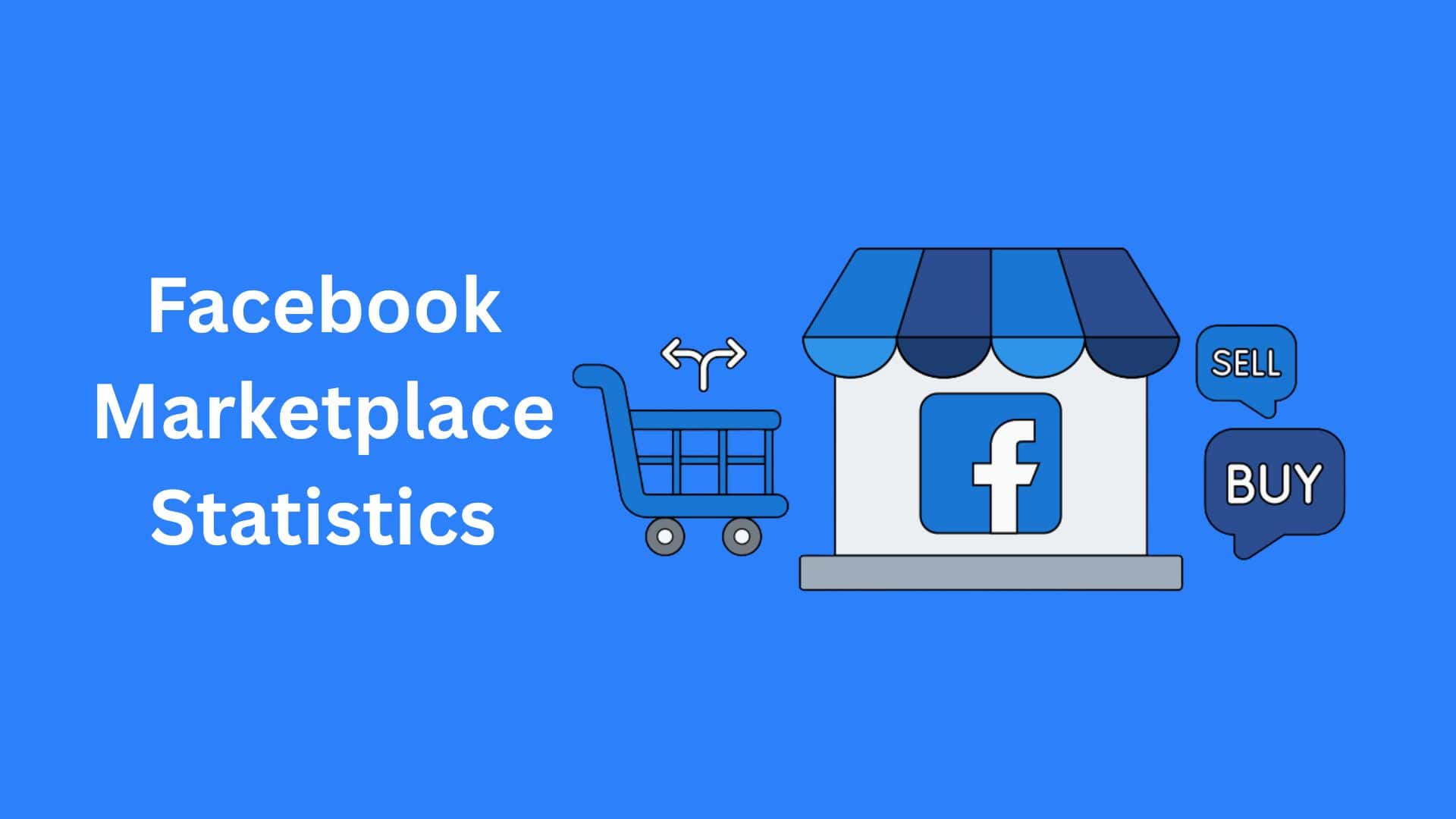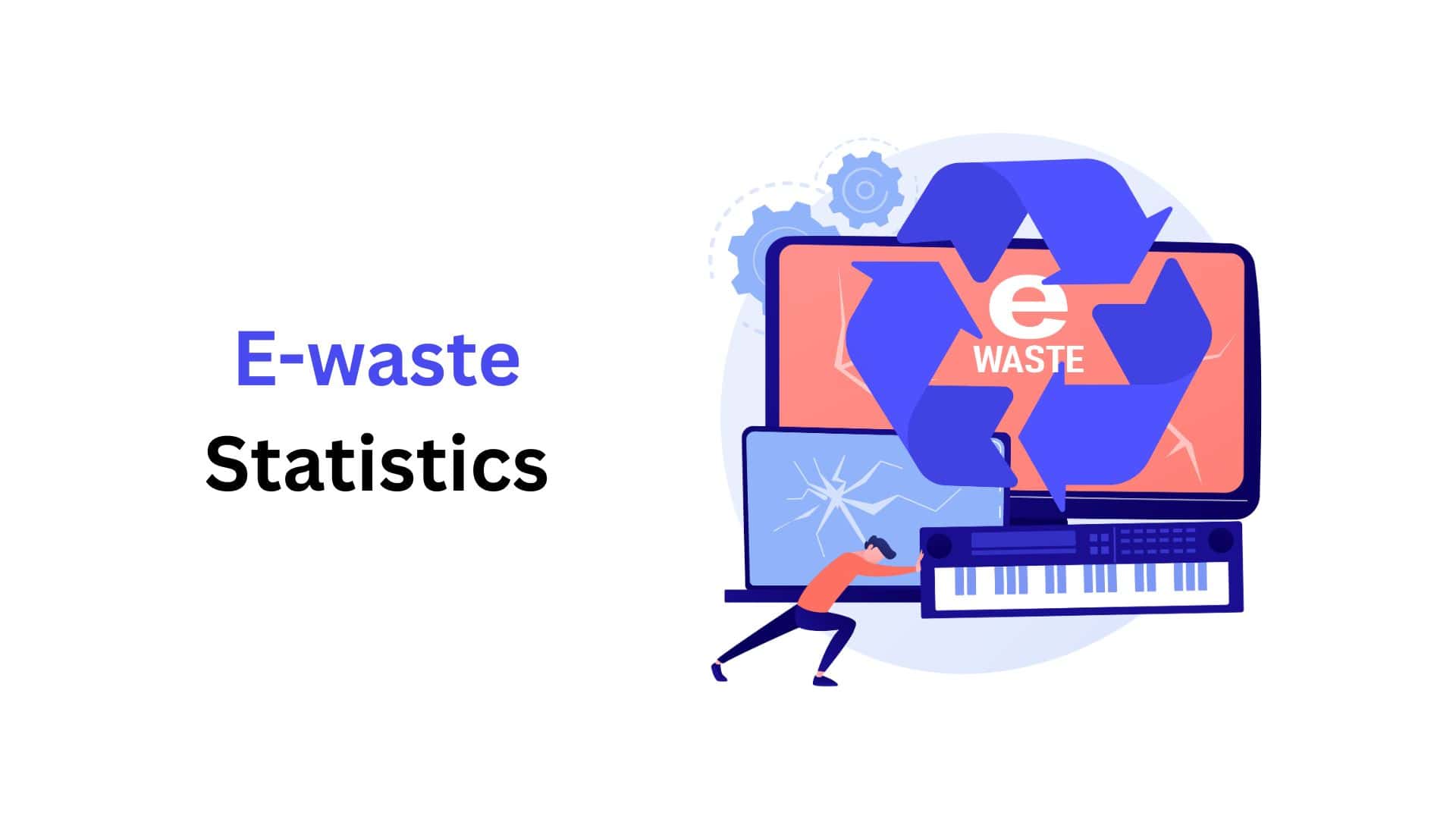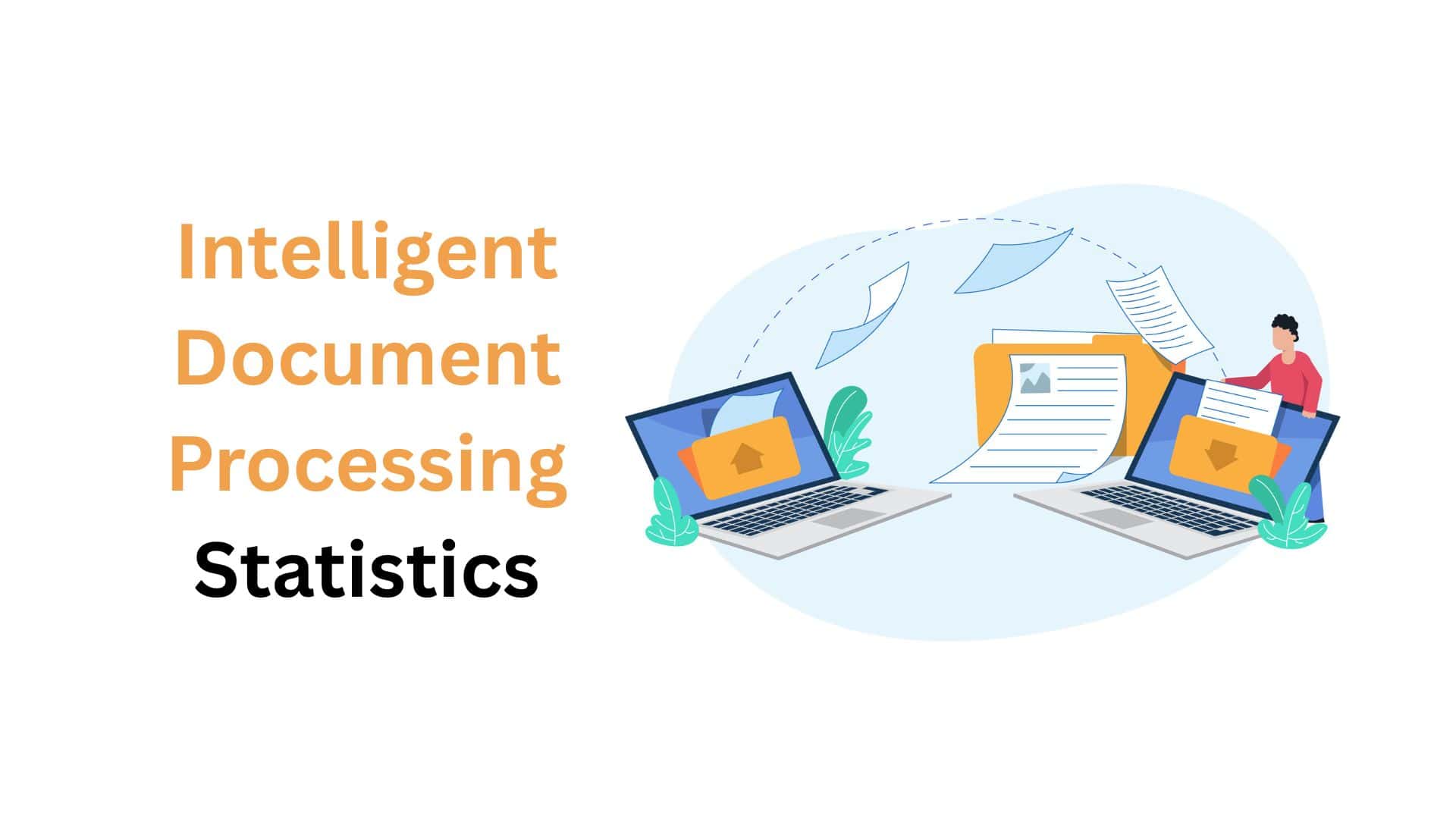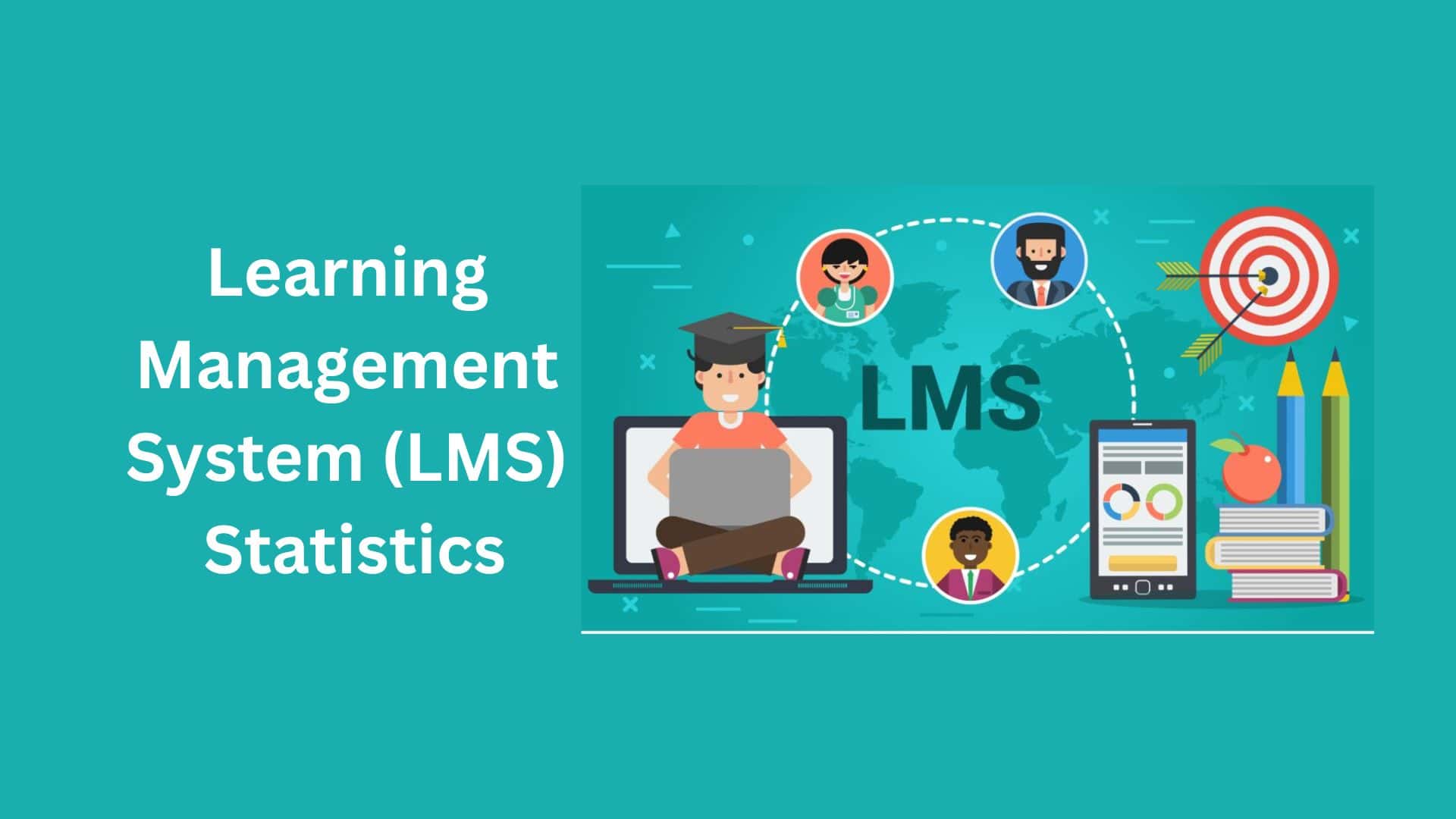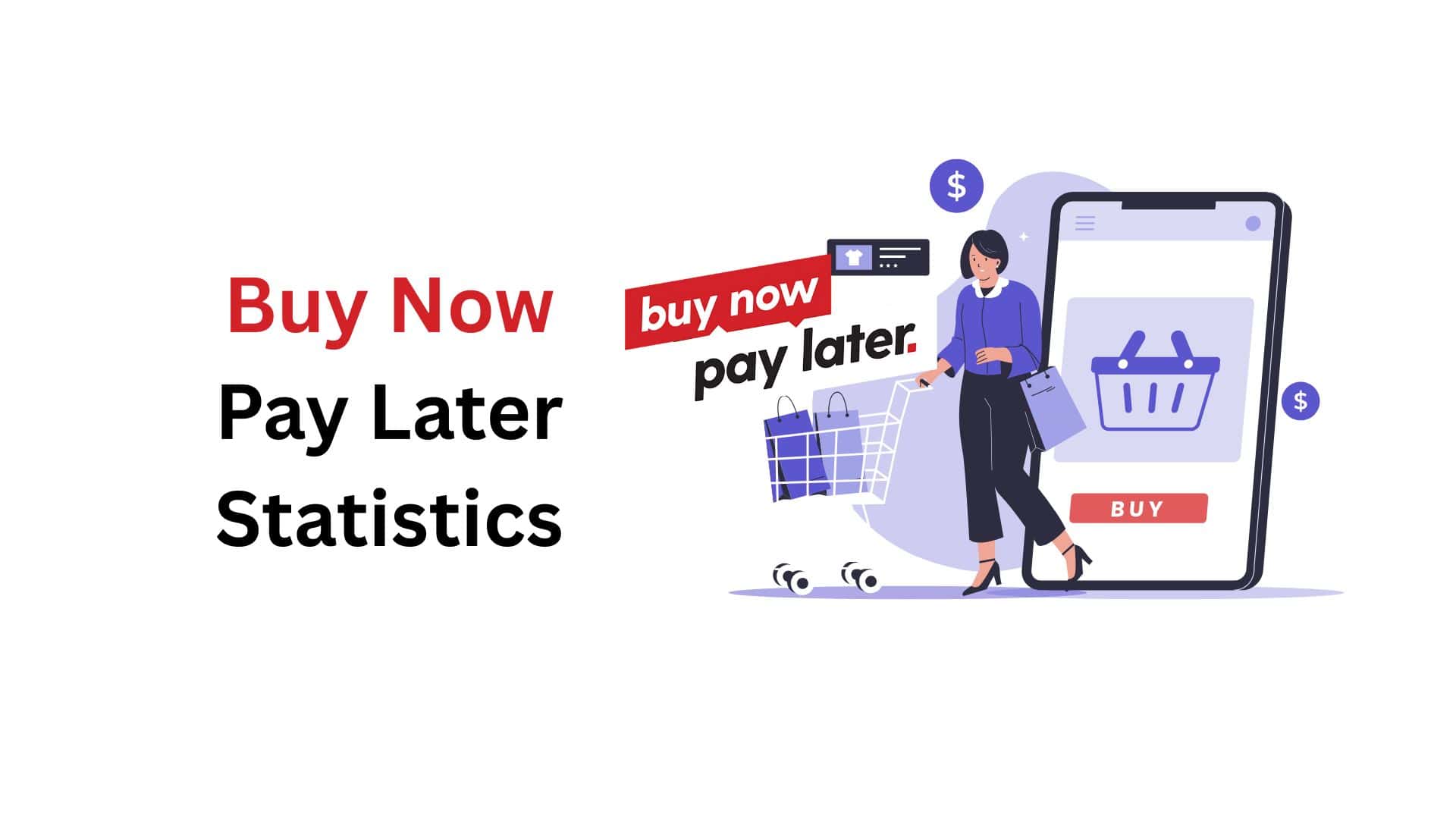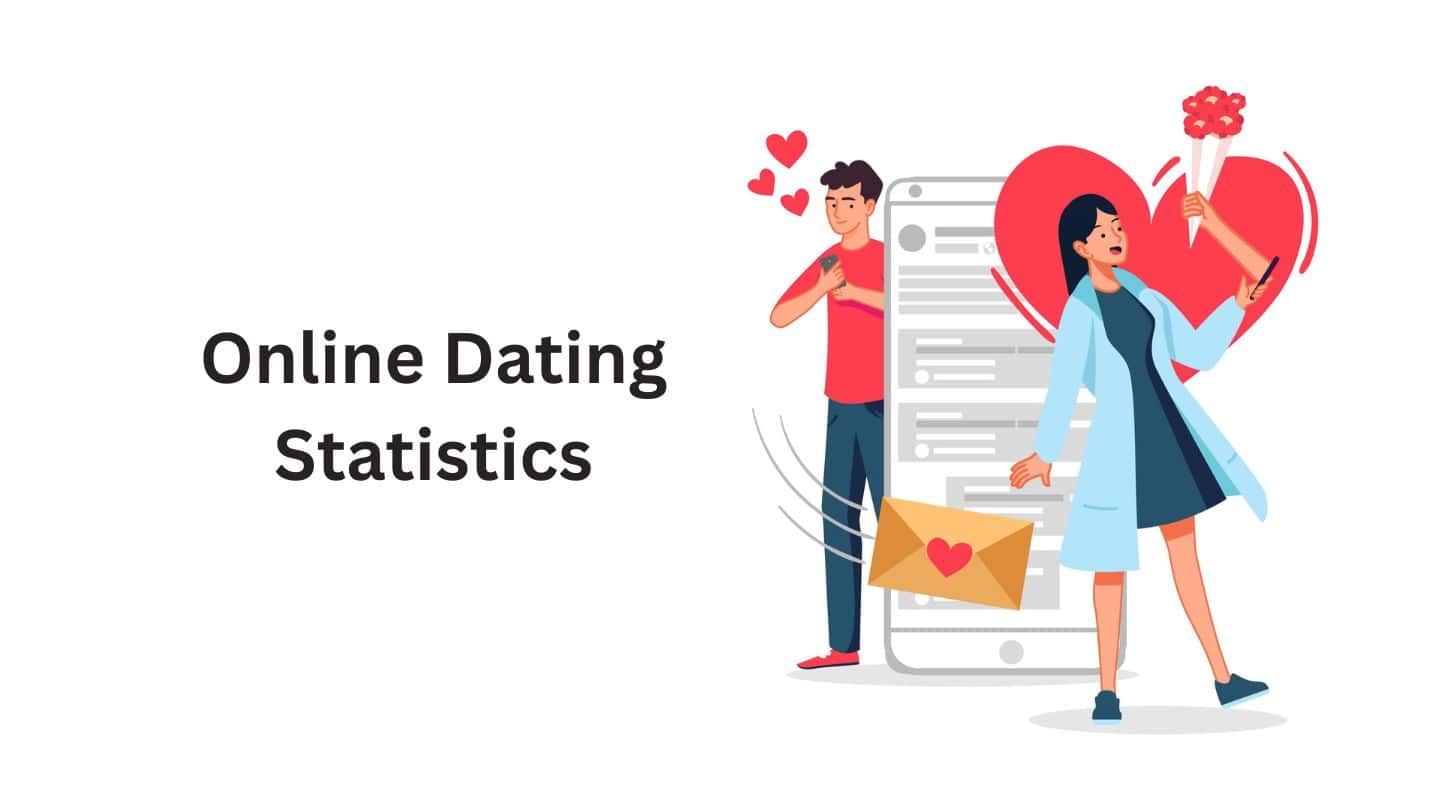FOMO Statistics By Demographics, Social Media, Mental Health And Trends (2025)

Updated · Aug 14, 2025

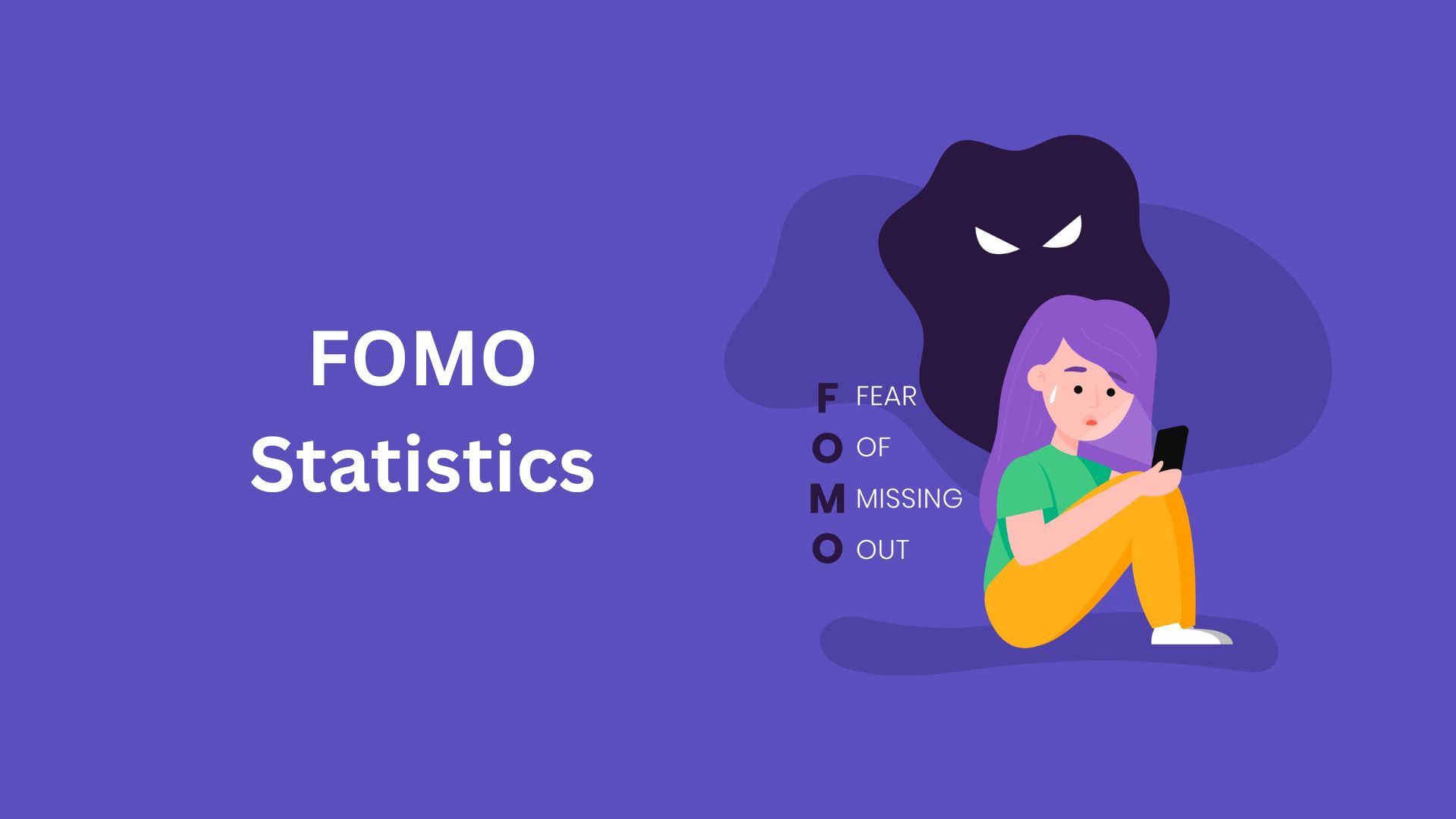
WHAT WE HAVE ON THIS PAGE
- Introduction
- Editor’s Choice
- Definition of FOMO
- Measurement and the FOMO scale
- Prevalence and Demographics
- Social media, platforms
- Mental Health, Anxiety, Depression
- Sleep, Attention and Productivity
- Consumer Behavior- Purchases, Scarcity
- Money Markets, Trading
- Risk Behaviors (Alcohol, Impulsive Buying)
- Pandemic, Trends and Interventions
- Conclusion
Introduction
FOMO statistics: If you’ve ever scrolled through Instagram at midnight and suddenly felt like your entire life is boring compared to everyone else’s… (I do). Well, you’ve met FOMO. Short for “Fear of Missing Out,” it’s not just a feeling; it’s a measurable, trackable thing.
And that’s where these FOMO statistics come in. These stats don’t just tell us how common it is; they reveal how it shapes the way we think, spend money, and even sleep. The truth is, FOMO has been studied for years, and the data behind it is honestly shocking.
From how many people lose sleep over it, to how often it makes us pull out our wallets, the numbers show that FOMO has gone from a social quirk to a full-blown cultural driver. In this article, we’re diving deep into the most detailed FOMO statistics you’ll find anywhere, covering its origins, how it works, who it hits hardest, and just how much it’s costing us in time, money, and peace of mind, literally everything. Let’s get started.
Editor’s Choice
- In 2004, that’s when Patrick McGinnis coined “FOMO.” It’s been around longer than you think, but the name stuck then.
- In 2013, researchers made the 10-item FoMO scale. It’s reliable with an alpha above 0.8, so legit.
- 40 to 60% of social media users report experiencing FOMO in older and newer surveys alike (MyLife, GWI).
- 65 to 70% of millennials especially say they feel FOMO when it comes to events and experiences.
- 37% of social media users say they’ve purchased because of FOMO, massive numbers for marketers.
- In crypto markets, 60 to 80% of retail traders report that at least some FOMO influences their decisions.
- A huge 93% of Gen-Z admit to losing sleep due to checking social media late at night.
- Higher FoMO correlates with higher anxiety, depression, and worse sleep, and some studies show interventions like limiting social media can reduce loneliness and depressive symptoms.
- During COVID, social media usage jumped by 25 to 47%, which likely stoked more FOMO.
- Behaviorally, FoMO drives impulsive buying, binge-drinking, distracted phone use, and compulsive brand behavior, especially in younger people.
| Topic | Statistic / Insight | Context / Significance |
| Year coined | 2004 | When the term “FOMO” entered the lexicon |
| FoMO scale created | 2013, 10-item scale, α 0.8 | Valid measurement tool |
| Social media user prevalence | 40 to 60% report experiencing FOMO | Common across broad surveys |
| Millennials & events | 65 to 70% feel FOMO about events | Younger adults are highly affected |
| Purchases due to FOMO | 37% of social users | Significant consumer behavior factor |
| Crypto trading & FOMO | 60 to 80% of retail traders are influenced by FOMO | Big role in speculative markets |
| Gen-Z sleep loss | 93% lose sleep due to social media | Major impact on rest and well-being |
| Mental health link | Moderate to strong ties to anxiety, depression | Interventions can reduce these effects |
| Pandemic increase in usage | +25 to 47% social media time during COVID | Elevated FOMO exposure and risk |
| Risky behavior drivers | FoMO is linked to binge-drinking, impulsive buying, and distraction | Public health concerns for youth |
Definition of FOMO
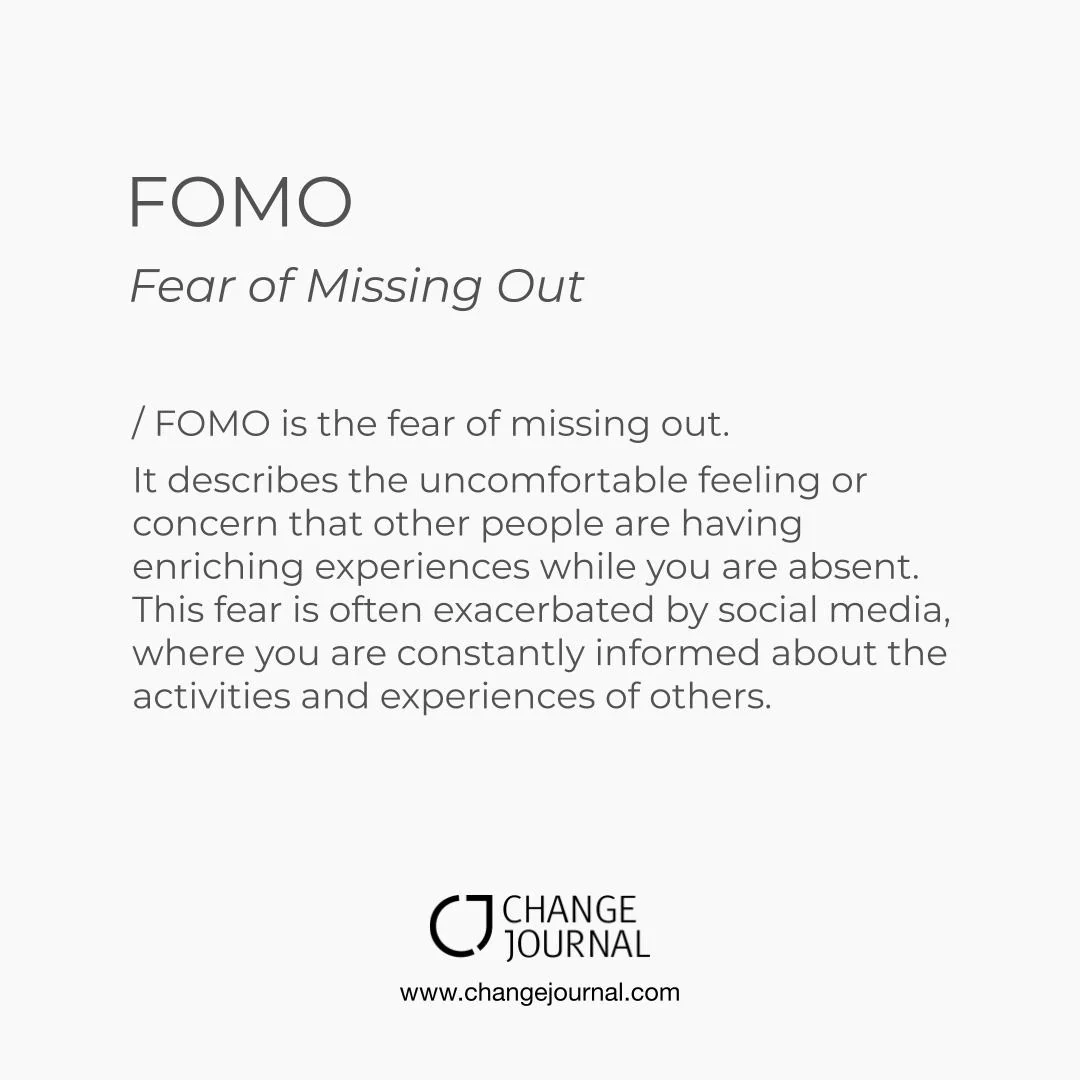
- The term “FOMO” (fear of missing out) was coined by Patrick J. McGinnis in a 2004 student op-ed while he was at Harvard Business School.
- Early academic operationalization came later; by 201,3, psychologists formalized a measurable FoMO scale used across studies.
- Dictionary adoption and mainstream journalism followed in the early 2010s, accelerating the term’s spread.
- Common plain-language definition used in research: a pervasive apprehension that others might be having rewarding experiences from which one is absent.
- Related opposites/adjacent terms that appear in the literature: FOBO (fear of a better option) and JOMO (joy of missing out).
- The phenomenon predates social media (Keeping Up with the Joneses, etc), but platforms made it continuous and measurable.
- In early surveys (2013), about half of social networkers reported FOMO-type anxiety when away from social networks. A widely cited figure is 56% from a 2013 MyLife survey.
- Academic framing ties FOMO to unmet social relatedness needs (self-determination theory). That’s the main theoretical anchor.
- Measurement matured fast: short scales, lab studies, field surveys, and large market reports now use the same core idea (missing rewarding experiences).
- Why FOMO Statistics matter: they turn a social feeling into actionable metrics that marketers, clinicians, and platforms use. That’s why you see charts, surveys, and conversion-focused A/B tests.
| Stat / Fact | Value |
| Year term coined | 2004 |
| Early survey: % of social users reporting FOMO | 56% (2013 MyLife) |
| Academic scale introduced | 2013, 10-item FoMO scale |
Measurement and the FOMO scale
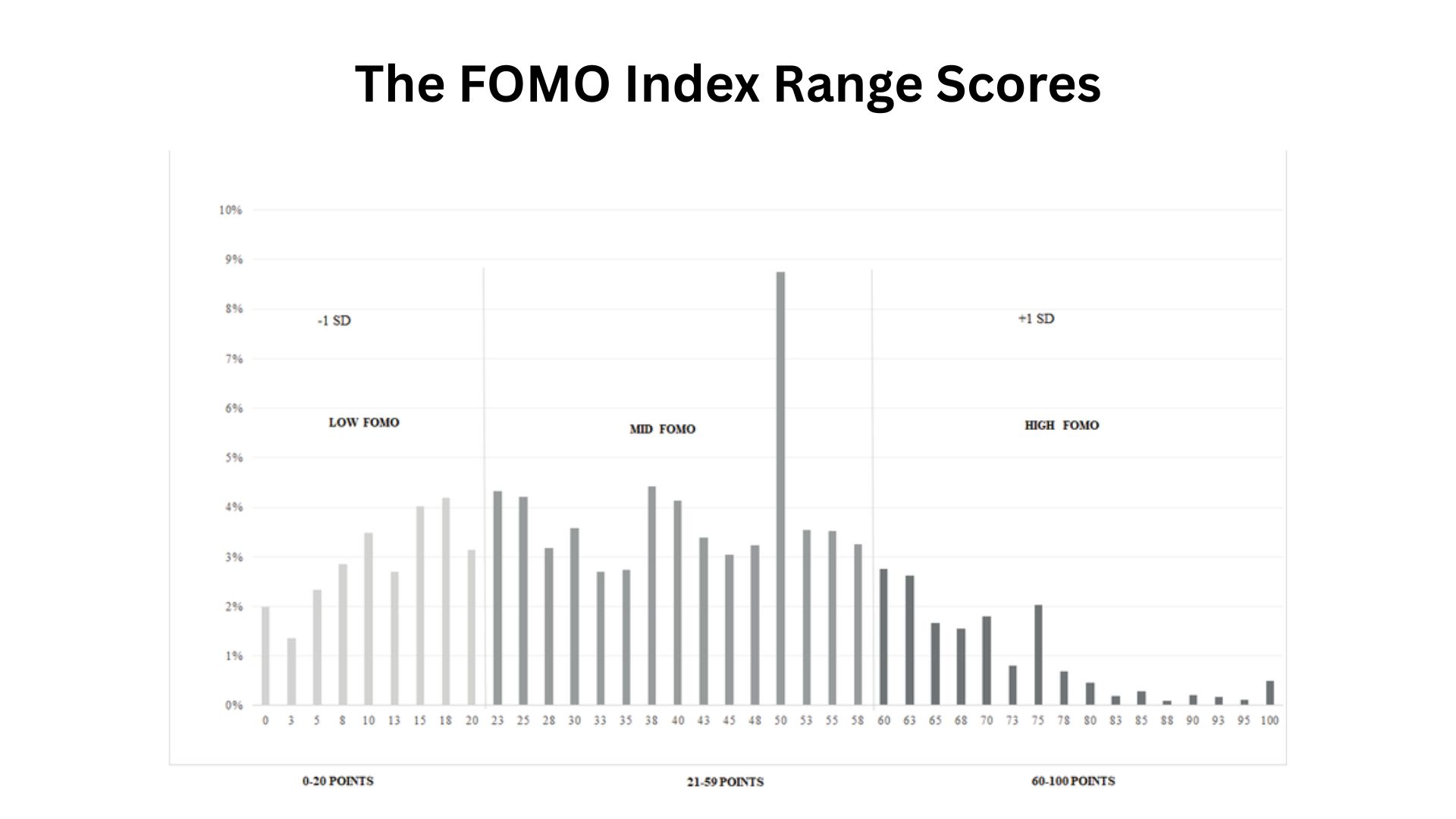
- The standard research tool is the 10-item Fear of Missing Out Scale (Przybylski et al., 2013). Respondents rate items on a 5-point scale; scores are averaged.
- Typical sample sizes in the major validation studies: thousands across multiple studies (N’s often 500 to 2,000+).
- The scale shows solid reliability (alpha usually .80 in published work).
- Researchers often split FoMO into trait vs. state measures; trait predicts chronic patterns, state captures momentary spikes.
- Many recent studies combine FoMO with measures of social media addiction, anxiety, depression, or problematic smartphone use and report moderate to strong correlations.
- Studies show FoMO is negatively correlated with life satisfaction and wellbeing, and positively correlated with time on social platforms.
- FoMO is used in marketing research as a predictor of impulsive purchases and susceptibility to scarcity appeals.
- Cross-cultural validation exists: FoMO scales have been translated and used worldwide with consistent patterns.
- Newer lab studies use experience sampling (EMA) to capture FoMO in real time; these find momentary FoMO spikes after seeing peers’ posts.
- Takeaway: the FOMO Statistics you see are usually the FoMO scale mean/percentile or derived behavior metrics (checks-per-day, purchases, sleep latency).
| Measure | Typical value/metric |
| FoMO scale length | 10 items |
| Reliability (alpha) | 0.8+ |
Prevalence and Demographics
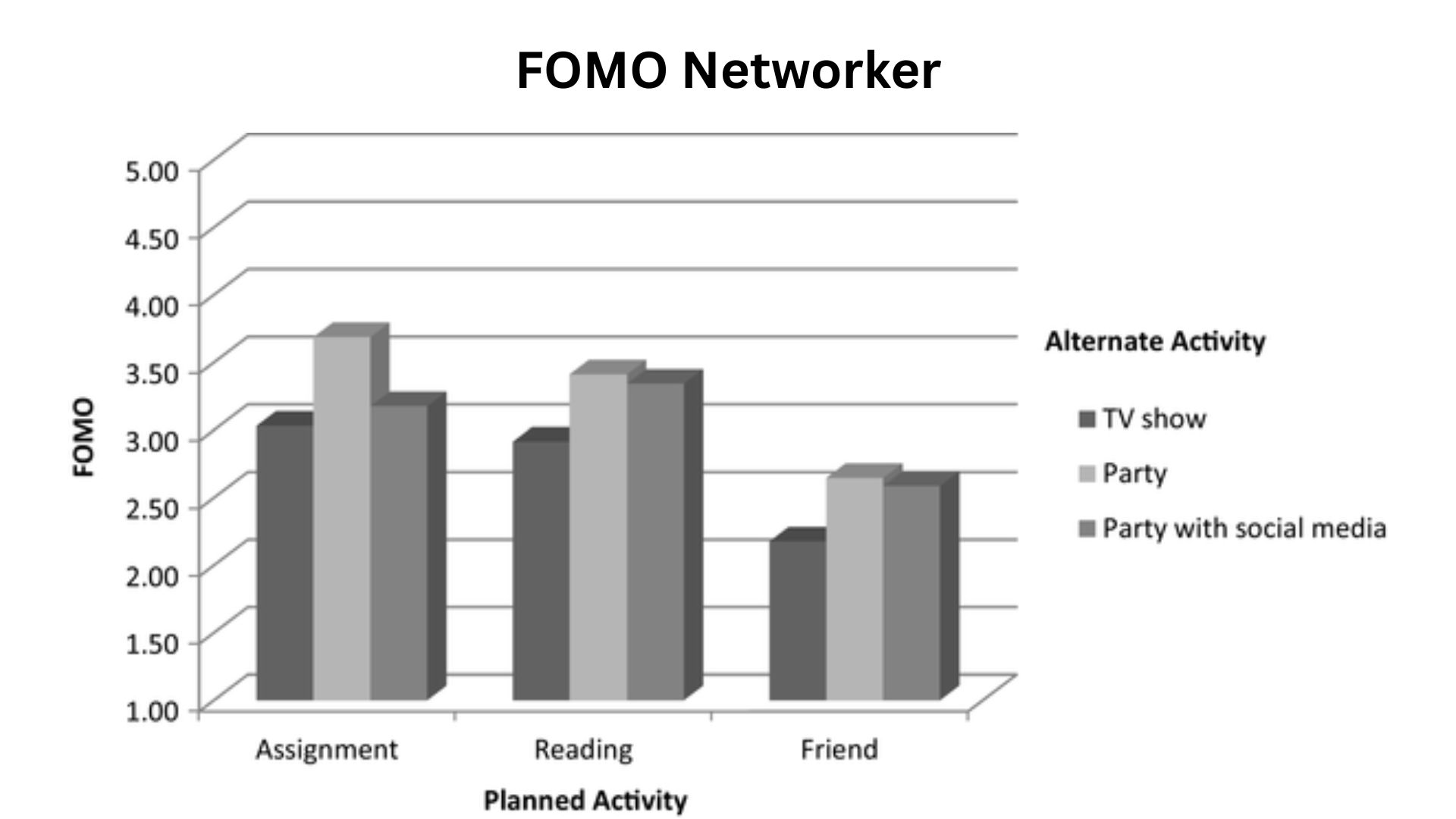
- Large market reports categorize users: GWI (GlobalWebIndex) created the “FOMO Networker” segment and measured prevalence across countries.
- Common headline: around half of social media users have experienced FOMO in surveys done in the 2010s; many later reports show similar ballpark figures (40 to 60% depending on sample and question).
- Millennials and younger adults consistently show higher rates: Eventbrite/Harris surveys and similar reports often put millennial FOMO near 65 to 69% for event-related worries.
- Teens and college students score higher on FoMO scales in multiple academic samples; some university studies report that 40%+ of students score in moderately high FoMO bands.
- Gender patterns are mixed across studies; some report slightly higher FoMO in males, others in females. The consistent signal is age and gender.
- Geographic variation exists (culture matters): southern European samples and some Eastern European teen samples often report above-average FoMO in national surveys.
- Urban, highly networked, and high-income groups sometimes report higher event-FOMO (likely because they have more social options).
- Device use: heavy smartphone users report higher FoMO; frequent checkers (multiple times/hour) are more likely to score high.
- Over time, some tracking studies show slight declines in the worst forms of FOMO as digital well-being tools spread, but the phenomenon remains common.
| Group | Rough % who report FOMO |
| General social media users (survey averages) | 40 to 56% |
| Millennials (event FOMO) | 65 to 69% |
| Teen/university samples | Many studies: 40%+ moderate-high FoMO |
Social media, platforms
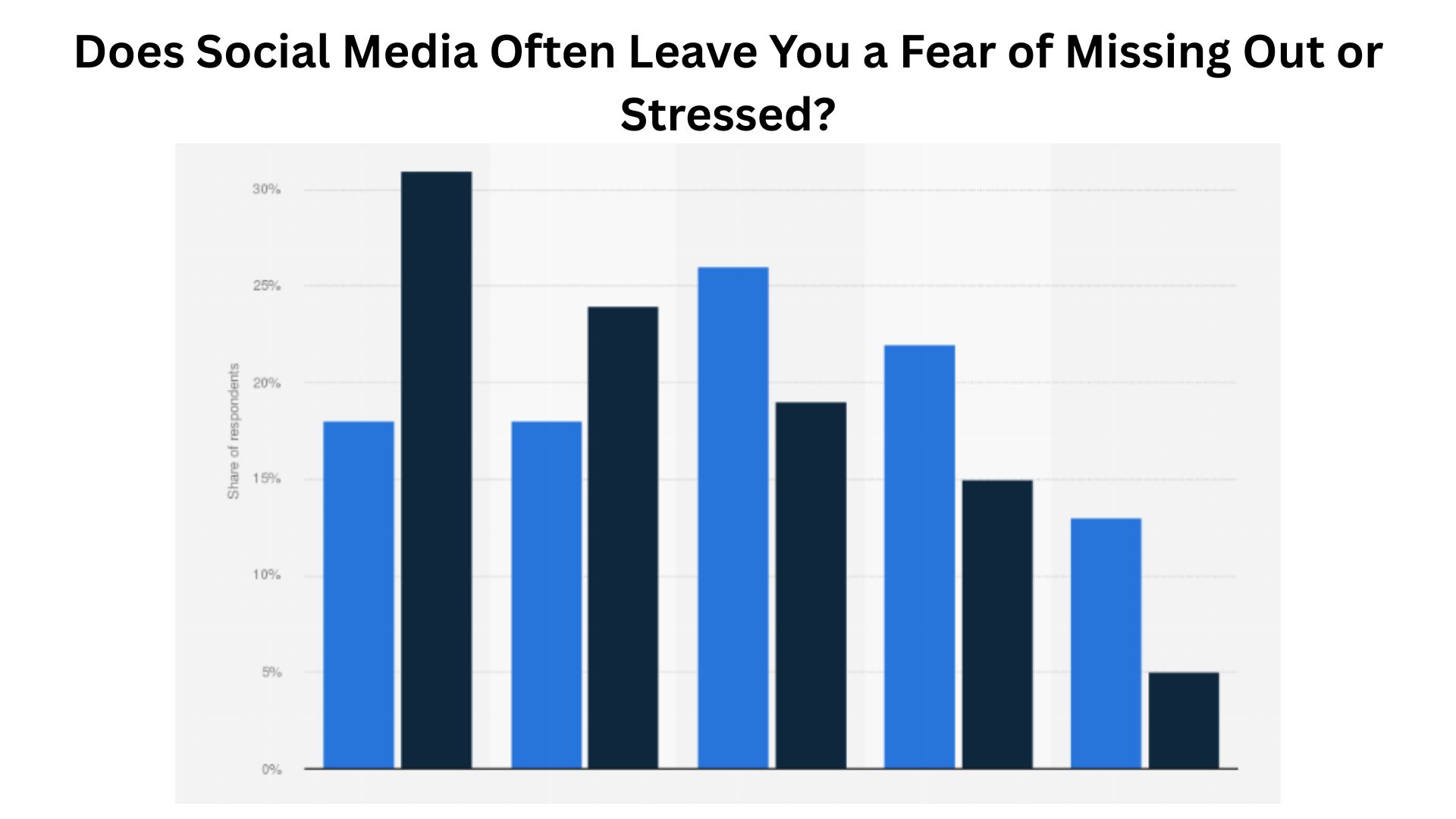
- Strong and repeated finding: more social media engagement predicts higher FoMO scores. That’s robust across samples.
- Platform differences: photo-first platforms (Instagram) and close-network platforms (Facebook, Snapchat, WhatsApp) show strong ties to FoMO in different studies. Instagram is often flagged for image-based social comparison.
- Experimental evidence: brief, randomized exposure to social feeds can lower momentary well-being and increase FoMO-like feelings.
- Before-bed use of social media is common and linked to late-night checking driven by FoMO; YouTube, Facebook, and Instagram rank high in pre-bed usage surveys.
- Platform features that fuel FoMO: stories disappearing (ephemeral content), live counts/attendee lists, visible likes, and algorithmic ranking that surfaces “what’s popular”. These features increase urgency.
- Some market reports: a substantial share of FOMO-driven purchases/discoveries happen after seeing friends or influencers on social platforms. GWI estimated a material link between FOMO networkers and purchase journeys.
- Private messaging platforms can be strong FoMO drivers because they connect you to your real-life close network, where missing out matters more.
- Platform responsibility: regulators and researchers are increasingly focusing on design features that nudge people into constant checking since those features amplify FoMO.
- Social proof/scarcity signals built into apps (e.g., “X people are viewing this now”) explicitly try to create a FOMO response to increase engagement.
| Platform/feature | FOMO link (type) |
| Instagram / image feeds | Social comparison, high FoMO |
| Facebook / private networks | Missing personal events, strong FoMO |
| App features (stories, live counts) | Increase urgency and checking |
Mental Health, Anxiety, Depression
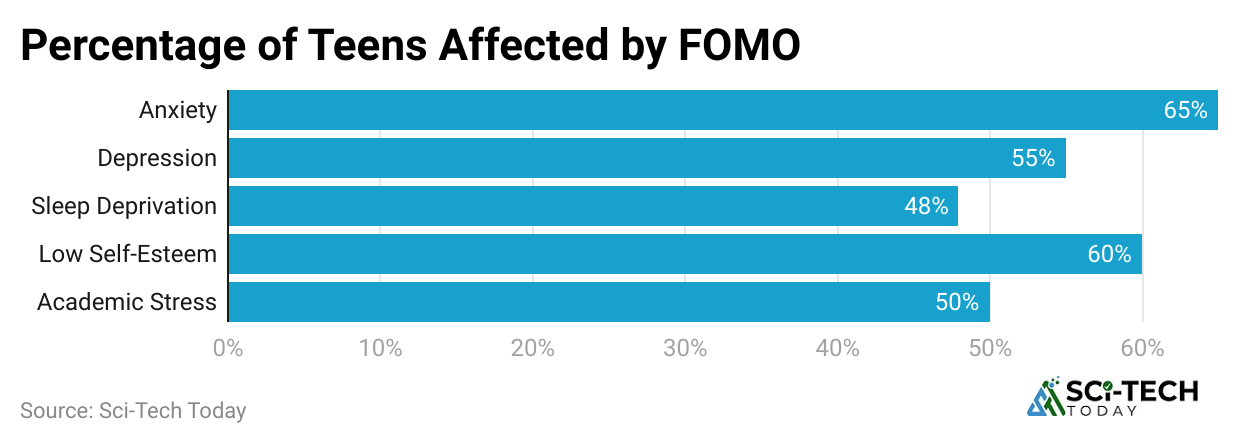
- Multiple reviews and empirical studies link higher FoMO scores with increased anxiety and depressive symptoms. This is a consistent finding.
- Przybylski et al. (2013) showed FoMO correlates with lower life satisfaction and worse mood; many later studies replicate that.
- During the COVID era, there’s evidence that FoMO rose as a mediator between pandemic stress and depressive symptoms in students.
- Effect sizes vary by study, but the relationship is often moderate: FoMO explains measurable but not overwhelming shares of variance in depression/anxiety; it’s one of several contributors.
- Limiting social media (experimental and quasi-experimental studies) has produced reductions in loneliness and depression in short interventions (for example, 3-week trials). That suggests feasible interventions work.
- Public-health scale: WHO summarized a 25% global increase in anxiety/depression prevalence during the first pandemic year; FoMO and increased online exposures are one of many pathways.
- FoMO amplifies rumination and social comparison, psychological mechanisms well-documented in the literature.
- Younger people show the strongest mental health signal linked to FoMO, probably because of higher social media use and life-phase sensitivity.
- Clinical relevance: Researchers suggest screening for problematic social media use and FoMO in youth mental health settings where appropriate.
| Outcome | Typical finding |
| Association with anxiety/depression | Moderate positive correlation |
| Change with social-media reduction | Reduced loneliness & depression in short RCTs |
| Pandemic mental health rise | 25% global increase in anxiety/depression (WHO) |
Sleep, Attention and Productivity

- FoMO drives late-night checking and bedtime social media use; many surveys find that a majority of adults use social media in the hour before bed.
- AASM and sleep org surveys report very high rates of Gen Z staying up because of social media; one headline: 93% of Gen Z admit to losing sleep from social platforms.
- Academic studies link FoMO with longer sleep latency (time to fall asleep) and, in some samples, shorter sleep duration. Findings are somewhat mixed but trending toward harm.
- Sleep hygiene interventions and limiting evening phone use improved sleep outcomes in trials.
- Productivity impact: frequent checking (driven by FoMO) fragments attention; studies on “phubbing” and multitasking link FoMO to lower work/academic performance.
- In student samples, poor sleep correlated with both high FoMO and more problematic social media use in the three clusters together.
- Real-world numbers: surveys put pre-bed social-media use rates at 70%+ for many adult samples, driving an average of several hours of daily use, which cuts into sleep opportunities.
- Employers and educators are noticing: some institutions advise digital curfews to protect performance.
- Mechanisms: cognitive arousal, blue light, and notification-driven awakenings. FoMO combines all three.
| Measure | Typical stat |
| Adults using social media before bed | 70%+ in surveys |
| Gen Z reports losing sleep due to social media | 93% (survey) |
| FoMO → increased sleep latency | Supported in recent studies |
Consumer Behavior- Purchases, Scarcity
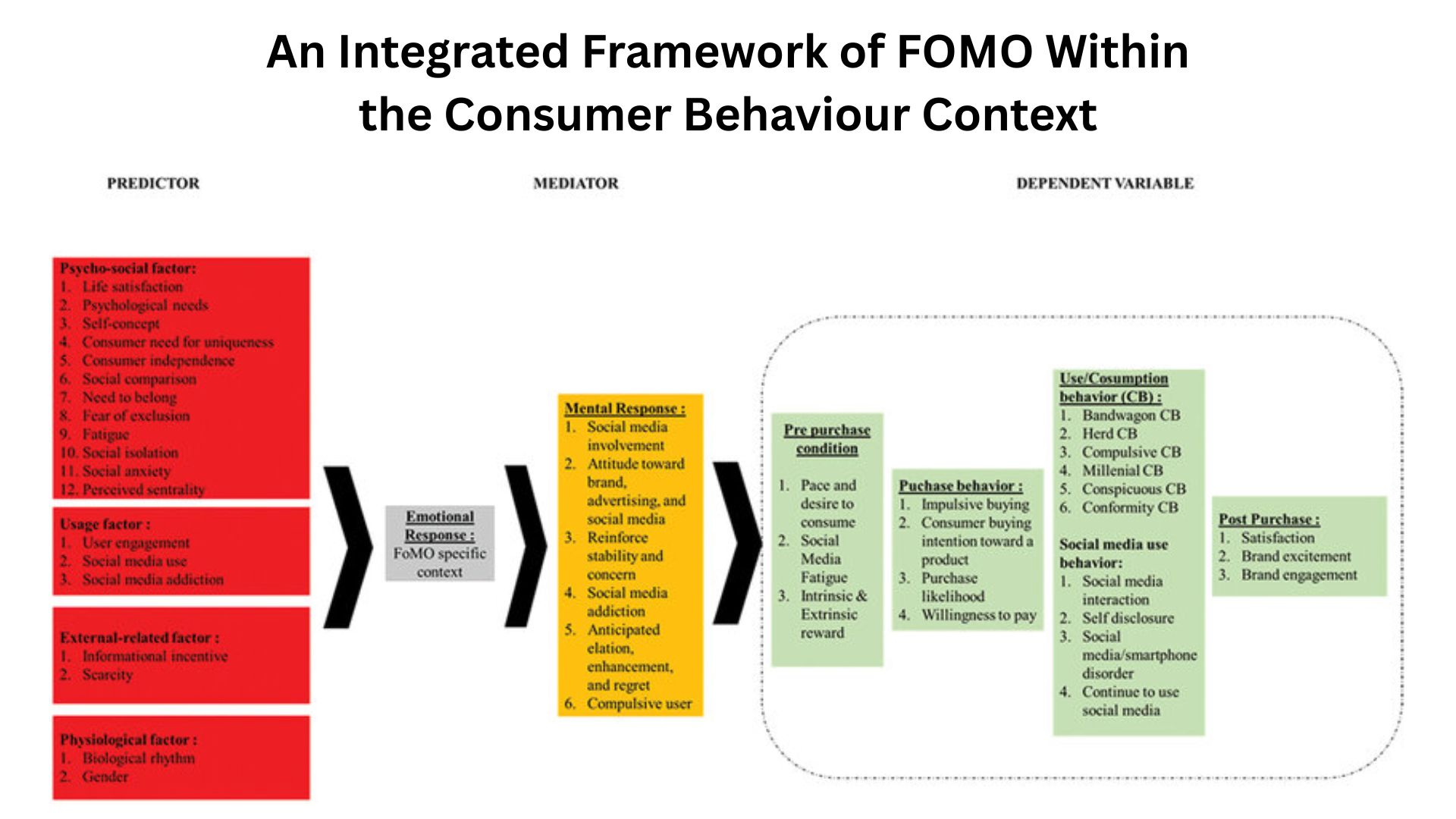
- GlobalWebIndex/GWI and similar reports find that a big chunk of purchases are FOMO-influenced; GWI reported that 37% of social media users say they have purchased because of FOMO.
- Marketing tests repeatedly show scarcity/time-limited offers raise conversion rates; peer-reviewed work finds time-scarcity promotions reliably boost purchases (experimental evidence exists).
- Industry surveys (marketing blogs and conversion platforms) report reactive purchase rates among millennials often reported in the 50 to 60% range after FOMO triggers, though these are survey-based.
- Live commerce/flash sales explicitly use FOMO cues (limited stock counters, countdown timers) and generate high impulse rates in many markets.
- Conversion increases are context-dependent; academic tests show time-limited messaging increases purchases, but the effect size depends on the product and prior demand.
- FOMO also predicts the search for “best deals” and bargain hunting among high-FOMO users; GWI notes high deal-seeking among FOMO networkers.
- Real numbers marketers use: showing low stock or “X people viewing” often increases click-throughs and reduces cart abandonment in A/B tests (platform numbers vary widely).
- On event spending: millennials prioritize experiences and many report spending more on events to avoid FOMO; Eventbrite/Harris indicated higher experiential spend among younger groups.
- Post-purchase regret is a documented side-effect of FOMO-driven buying; some studies link impulsive purchases to later regret and lower satisfaction.
| Stat | Value |
| % social users who bought because of FOMO | 37% |
| Scarcity/time-limited offers effect | Significant uplift (varied by study) |
| Millennials’ spending on experiences | 69% indicate events matter |
Money Markets, Trading
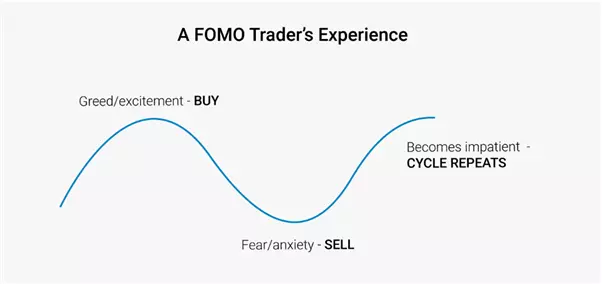
- FOMO is a documented behavioral driver in trading: seeing others “win” pushes late entries, chasing rallies, and poor timing. This is especially visible in crypto markets.
- Industry surveys (exchanges and trading platforms) report high self-reported FOMO in crypto holders; for example, Kraken’s educational report/survey stated very high rates of FOMO-driven decisions (majorities in some samples).
- Many traders admit to buying during peak hype because they feared missing the move; trading studies and qualitative interviews show emotion-driven entries are common.
- New-investor waves (2020 to 2022) brought many first-time buyers into crypto and equities; surveys show a nontrivial share entered via crypto channels out of fear of missing out on quick gains.
- Quantitative trading research links sentiment measures (fear/greed indexes, social sentiment) to short-term price moves in a context where FOMO amplifies volatility.
- Buy-high-sell-low patterns in retail trader interviews are often explained by FOMO + herd behavior; multiple qualitative studies document that.
- FOMO trading correlates with higher self-reported psychological distress in some trader samples.
- Regulators flagged FOMO-style crypto advertising as problematic because it targets urgency and scarcity cues to retail customers.
- Practical stat: in some exchange surveys, 60% of retail users admit FOMO or FUD influenced trades; numbers vary by platform and year.
| Finding | Typical reported figure |
| % crypto holders influenced by FOMO in some surveys | 60 to 84% (platform surveys vary) |
| New investor share entering via crypto (2022) | 4.9% of adults reported starting via crypto |
Risk Behaviors (Alcohol, Impulsive Buying)
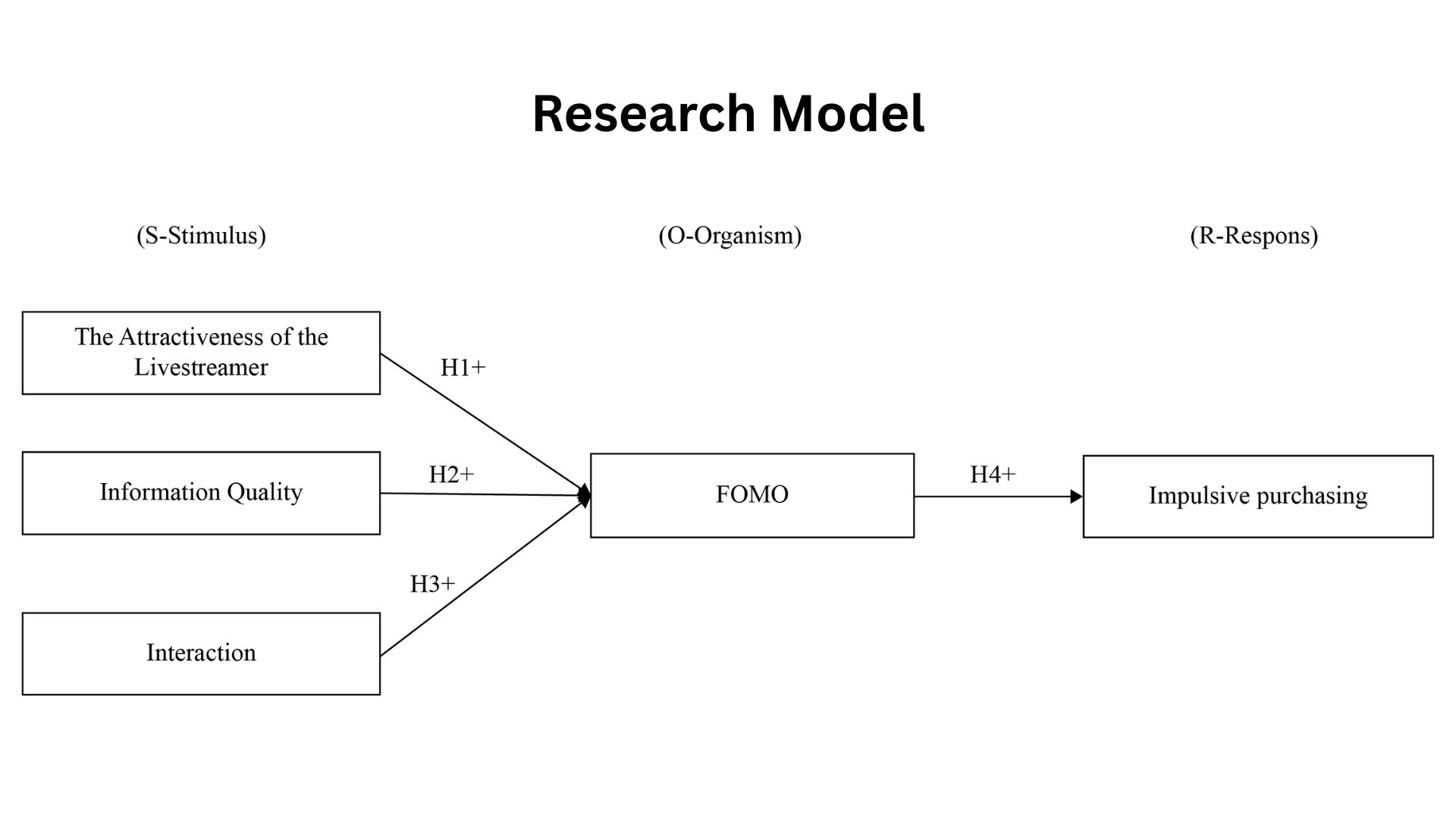
- FoMO correlates with higher alcohol use, binge drinking risk, and intentions to drink in adolescent and college samples. Several studies find that FoMO predicts drinking behavior above some personality predictors.
- FoMO also positively predicts impulsive and compulsive buying in consumer studies; recent work ties FoMO to post-purchase regret and compulsive brand buying.
- For adolescents, FoMO increases risky phone behaviors (e.g., distracted driving, sexting) because of immediate checking pressure. Historical surveys flagged this strongly.
- Mechanism plausibility: FoMO increases urgency and perceived value of social presence, which lowers inhibition for risky or impulsive acts.
- Quantitative results: studies show moderate effect sizes; for example, one adolescent binge-drinking paper showed FoMO predicted frequency and harm after controls.
- Health messaging and prevention programs are starting to include FoMO-aware content for youth substance-use prevention.
- Compulsive buying linked to brand passion and FoMO shows rising concern in marketing literature and university research.
- Livestream commerce increases impulsive buys among young users, and FoMO is a mediator in many of those models.
- Financial consequences are real: reported cases in media show catastrophic consumer debt from impulse/compulsive buying; academic work flags this as a public health issue.
| Risk | Relationship to FoMO |
| Binge drinking (adolescents) | FoMO predicts a higher risk |
| Impulse/compulsive buying | Positive association (mediated by social commerce) |
Pandemic, Trends and Interventions
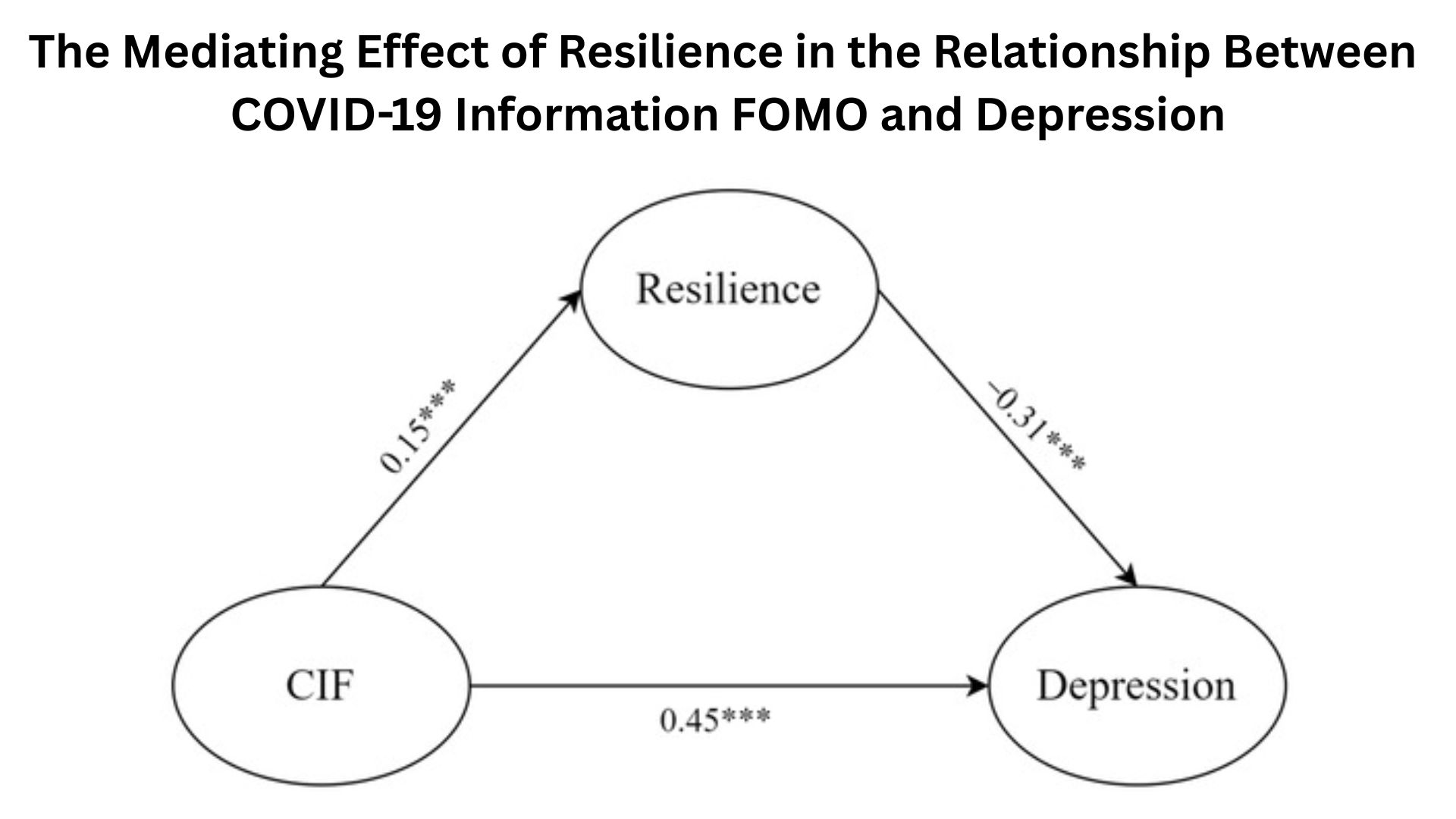
- COVID-19: social isolation, online news exposure, and changed event calendars altered FoMO patterns; some studies report higher FoMO as people worried about missing pandemic-era milestones.
- Social media time jumped during lockdowns: survey snapshots showed 25 to 47% increases in time spent on social platforms early in the pandemic. That boosted the opportunity for FoMO.
- Mental health overall worsened during the pandemic (WHO: 25% rise in anxiety/depression). FoMO is one of many mediators connecting increased online exposure to worse well-being.
- Reduction trials: restricting social media to 30 minutes/day or structured digital detoxes produced meaningful drops in loneliness and depression in controlled studies.
- The FoMO-R method (technical + behavioral steps) showed positive change in small diary/focus-group evaluations; it combines filters, autoreplies, and skills training.
- Practical tools that work in trials: time limits, notification pruning, scheduled checking, and gratitude/self-compassion practices.
- Platform responses: digital wellbeing features (screen time dashboards, quiet hours) aim to reduce FoMO-driven checking, and adoption of these features correlates with lower reported FoMO in some tracking reports.
- Education and habit change produce medium-term benefits; short-term abstinence works fast, but long-term change needs habit-building.
- For marketers and designers: ethical use of scarcity is increasingly urged; regulators scrutinize FOMO-style financial adverts and high-pressure crypto ads.
| Topic | Key stat/result |
| Increase in time on social media early COVID |
25 to 47% increases reported |
|
Social media limits RCT |
Reduced loneliness and depression in 3 weeks |
| FoMO-specific intervention (FoMO-R) |
Positive changes in small trials |
Conclusion
After digging through all these FOMO statistics, one thing’s pretty clear for me and you, too: this isn’t just about missing a party or not buying the latest gadget. FOMO has worked its way into almost every part of modern life. It’s in the way we check our phones first thing in the morning, the way brands market to us, and the way we make big and small decisions.
The numbers prove it’s not just a passing trend; it’s a behavior pattern that’s changing how we connect, spend, and even think. The data shows how powerful it can be, but it also gives us a bit of an edge because once you know the stats, you start seeing the signs everywhere. And maybe next time, when that feeling creeps in, you’ll remember it’s not just you. It’s a universal thing. If you have any questions, kindly let me know in the comment section. Happy to answer 🙂
FAQ.
Roughly 40 to 60% of social media users report feeling FOMO in surveys. Among millennials, that number jumps to 65 to 70% especially when it comes to events and experiences.
The term “FOMO” was coined in 2004 by Patrick McGinnis. The first validated FoMO scale appeared in 2013, a 10-item tool with strong reliability.
About 37% of social media users admit to making purchases specifically because of FOMO. That’s a huge driver in digital marketing and impulsive spending.
Definitely. A whopping 93% of Gen-Z says they lose sleep over social media. Studies also show that higher FoMO scores correlate with delayed sleep onset and poorer sleep quality.
Yes, the data shows a moderate to strong correlation. People with higher FoMO scores tend to have higher anxiety and lower overall well-being. But interventions like reducing social media use can help lessen those effects.
Social media time surged by 25 to 47% during early COVID lockdowns. That spike, along with canceled plans and stress, likely fueled more FOMO among many users.
In some crypto and retail trading surveys, 60 to 80% of users say FOMO influenced their decisions, especially in volatile markets or hype cycles.
Yes. Higher FoMO is linked to more binge-drinking in teens, impulse buying, distracted phone use (e.g., while driving), and compulsive brand purchasing. It’s seen as a risk marker in youth and consumer health studies.
Absolutely. Interventions like limiting daily screen time, scheduled “digital detox” breaks, and behavioral tools like “FoMO-R” (filters, reminder autoresponses, gratitude journaling) have shown real effects in reducing loneliness, depression, and nighttime checking.
Probably this one: while FOMO feels like just an emotional quirk, it’s measurably powerful, impacting purchase decisions for over a third of users, sleep habits for nearly all of Gen-Z, and anxiety levels for many more. Once you know the stats, FOMO isn’t just a buzzword; it’s a behavior pattern backed by numbers.

Jeeva Shanmugam is passionate about turning raw numbers into real stories. With a knack for breaking down complex stats into simple, engaging insights, he helps readers see the world through the lens of data—without ever feeling overwhelmed. From trends that shape industries to everyday patterns we overlook, Jeeva’s writing bridges the gap between data and people. His mission? To prove that statistics aren’t just about numbers, they’re about understanding life a little better, one data point at a time.

